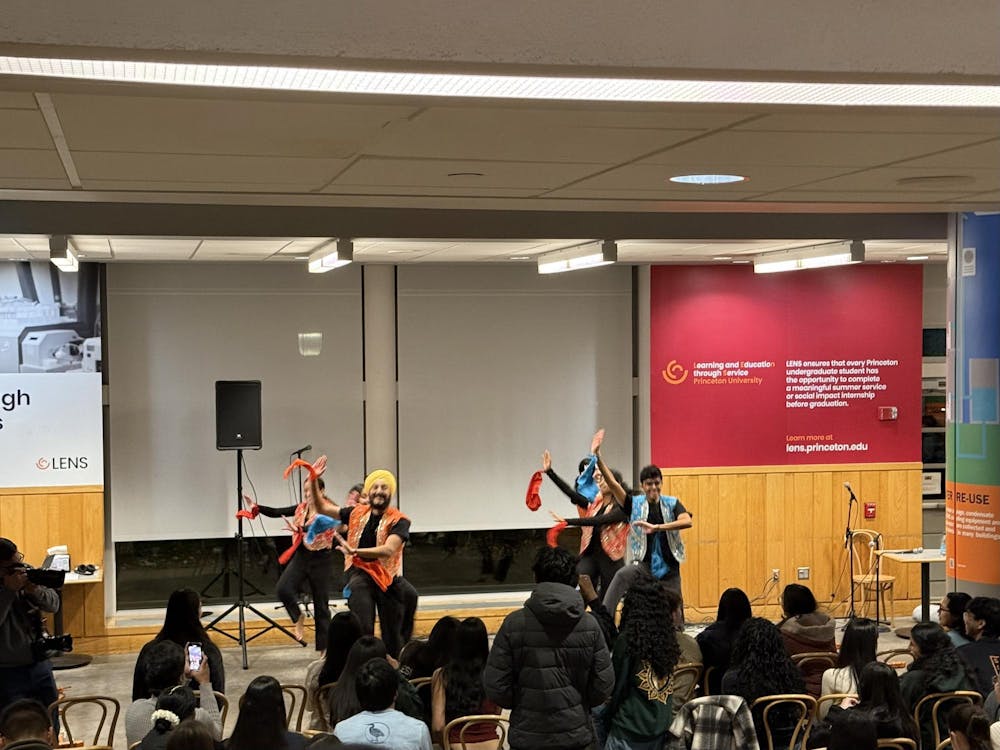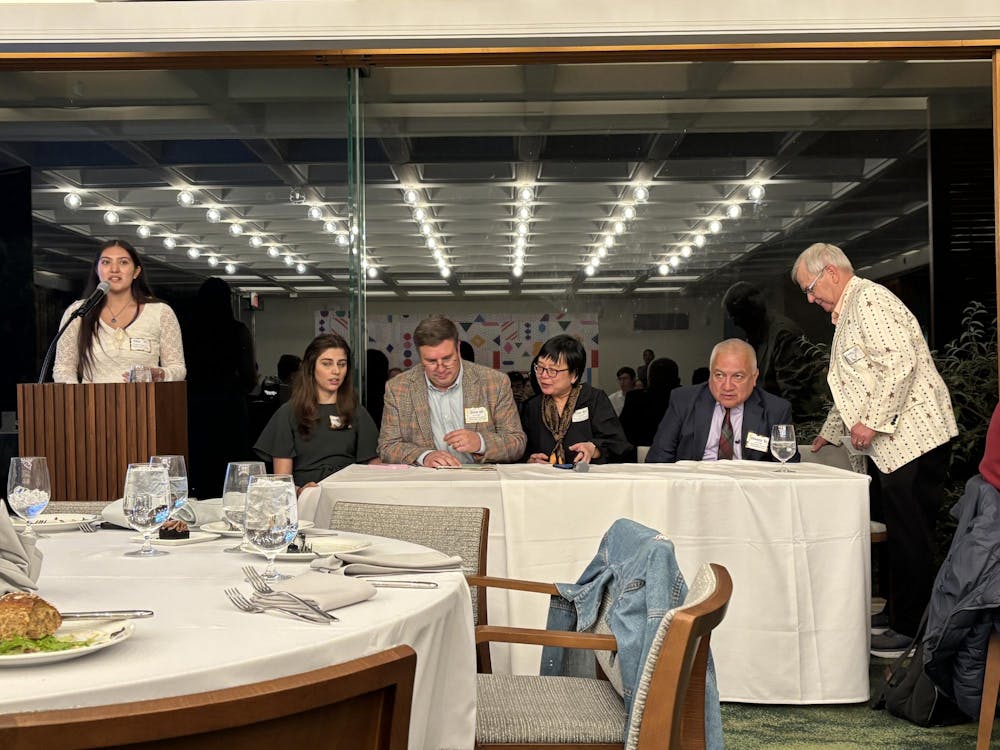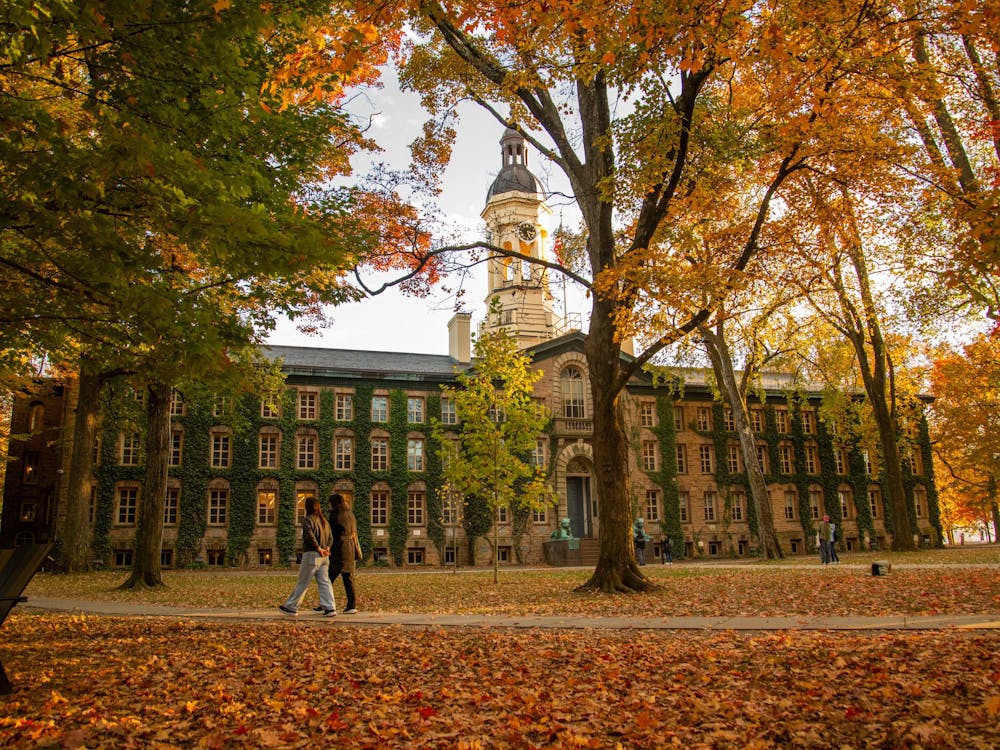Frank Gehry will soon be joining the ranks of I. M. Pei and Robert Venturi '47 GS '50 in the list of famous architects who have designed buildings on campus, thanks to a $60 million gift from Peter Lewis '55.
Lewis' donation will fund the construction of a new science library, which will be designed by Gehry. The building will be located at the corner of Ivy Lane and Washington Road. The University trustees announced the gift at their meeting this past weekend.
Gehry is best known for his design of the Guggenheim museum in Bilbao, Spain. He has recently worked on an addition to the Corcoran Gallery of Art in Washington, D.C.
The $60 million gift, combined with a $55 million gift in 2000, has made Lewis the University's single largest financial contributor. Part of Lewis's previous gift funded the Lewis-Sigler Institute for Integrative Genomics, which is currently under construction across Washington Road from the proposed library site. The University's previous largest donor was Hong Kong entrepreneur Gordon Wu '58.
Architecture school dean Ralph Lerner said that Gehry is one of the most important practicing architects in the world.
"Frank Gehry is style," he said. "His work is highly original and very idiosyncratic, both in its forms and in its materials. He's probably done some of the best known buildings of the last 15 to 20 years."
A representative of Frank O. Gehry Associates said that the firm has not begun planning the new building and would not do so until January of next year.
Lewis, a Wilson School major at the University, went to work for his father's insurance company after graduating and has stayed with the company ever since. He rose to the position of chairman of the board and transformed the company — now the Progressive Corporation — into the nation's fourth largest auto-insurer.
"I care a lot about Princeton," he said. "It was in many ways the single most important developmental experience in my life."
Lewis said that his love of the University, coupled with his financial success, was the primary impetus behind his gift. "Life has been good to me. I'd rather enjoy giving it [my money] away while I'm alive, rather than having someone else give it away for me when I'm dead," he said.
The selection of Gehry as architect is no coincidence. Lewis — who also chairs the Solomon R. Guggenheim Museum Board of Trustees — has worked with Gehry in the past.
Lewis's first collaboration with Gehry was a commission for a residence that ultimately was never built. However, according to Lewis, many of the ideas developed for the Lewis residence evolved into the design for the Bilbao Guggenheim.

Gehry is also designing the Peter B. Lewis building at the Weatherhead School of Management at Case Western Reserve University, which is also a gift from Lewis.
Gehry has been considered as an architect for University buildings in the past, according to Lerner. However, the new science library marks the first time Gehry has received a commission.
Initially, there was resistance to the idea of a Gehry building on campus, Lewis said. Some worried that the architect's distinctive style — which is characterized by organic, non-rectangular shapes often finished in titanium and glass — would clash with the University's existing buildings.
In the end, however, Lewis managed to overcome this resistance. President Tilghman flew to Santa Monica earlier this year at Lewis's request to meet Frank Gehry and discuss the possibility of commissioning a Gehry building.
Tilghman said that the University needs a new science library to integrate the multiple science libraries that are now scattered among different buildings and departments. The convergence of diverse scientific fields has led to the replication of resources — sometimes expensive ones — at the various science libraries.
"It made no sense, intellectually, to have all these separate libraries," she said.
According to Tilghman, the design of the library will also reflect a more modern vision of a library, including classrooms, study spaces, computer clusters and other facilities.
"We're going to put a lot of good stuff in this building, not just books," she said.







